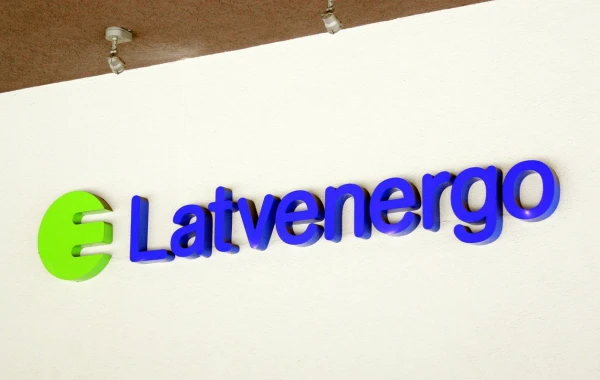
Bitcoin is a digital asset that no longer defines the cryptocurrency market but reflects its state. After volatile years, the market is gradually stabilizing: large companies are including BTC in their balance sheets, and governments are discussing regulation.
But even with this, predicting the price dynamics of Bitcoin is a task that requires attention to dozens of factors: from the Federal Reserve's interest rates to the behavior of retail investors and technical indicators.
Many experts see growth potential for the coin — but at the same time emphasize the high volatility and risks. According to analysts, the price of Bitcoin could reach levels from $150,000 to $250,000 by the end of the year.
The main drivers of this rally are institutional purchases, the growth of exchange products for BTC, easing monetary policy, and at the same time, limited supply. For example, Standard Chartered expects an increase in demand for Bitcoin due to ETF inflows and bank reserves.
At the same time, more conservative estimates are also available: some models that consider a correction scenario suggest a price closer to $110,000 - $130,000. Thus, the Bitcoin price forecast for the end of the year can be represented as a range: from a growth of 3-4× to more aggressive scenarios — up to 6-7× relative to current levels (assuming a price of around $40,000-50,000).
Institutional investors still view Bitcoin as a hedge against inflation and a long-term investment. However, the market structure is gradually changing: large funds operate through ETFs and regulated exchange instruments, while retail participants prefer to hold assets themselves and use strategies without leverage. This makes the market more mature: speculative spikes become less frequent, and investor behavior becomes more conscious.
Such a shift also affects the short-term price dynamics: increasingly, the direction of movement is determined not by emotions, but by a combination of technical indicators and fundamental factors.
Economic Factors and Investor Behavior
The main external trigger remains monetary policy. A decrease in the interest rate in the U.S. can boost demand for risky assets, including cryptocurrencies. According to Bloomberg, the U.S. Federal Reserve lowered the base rate by 0.25 percentage points — to a range of 4.00 – 4.25% — and allowed for the possibility of further reductions. Analysts viewed this as the beginning of a policy easing cycle, which traditionally increases demand for risky assets, including cryptocurrencies. However, past results do not guarantee the same effect: today the crypto market depends not only on rates but also on long-term trends — infrastructure development and regulatory clarity.
Institutional investors still see Bitcoin as a hedge against inflation and a long-term investment. However, the market structure is changing: large funds operate through ETFs and exchange instruments, while retail participants prefer wallets and long-term investments without leverage.
Technical Indicators and Market Behavior
From a technical analysis perspective, Bitcoin is at a long-term support level formed after the price consolidation of Bitcoin in 2024. The Relative Strength Index (RSI) shows a moderate value, which is usually considered a signal of a neutral market. BTC/USD maintains bullish momentum but has not yet demonstrated breakthroughs to new levels. In the short term, fluctuations within the current range are possible, while in the long term, a gradual strengthening of Bitcoin's position as a digital asset is expected.
Some analysts call the range from $120,000 to $130,000 a potential benchmark for the end of 2025, if the current trend and growth in interest in ETFs continue. However, this is just a scenario based on current data. More importantly, the market is becoming less speculative and more structural — it is influenced not only by sentiment but also by technological solutions.
Technologies and New Growth Models
The next stage in the development of Bitcoin is the implementation of Layer 2 solutions. They help scale the network and reduce the load on the main blockchain, speeding up transactions and lowering fees. One such example is Bitcoin Hyper — a Layer 2 platform that uses the Solana Virtual Machine and Canonical Bridge to ensure high speed and compatibility with other services.
BestWallet
For investors, this is important not only from a technological perspective. The development of L2 networks creates a new market for additional tokens and DeFi projects related to Bitcoin. In the case of Bitcoin Hyper, the $HYPER token serves this mechanism: it is used for paying fees, staking, and participating in ecosystem governance. Thus, Layer 2 gradually forms a new economy around Bitcoin, where each level serves its purpose — security, speed, scalability.
Technological growth also affects market behavior. If earlier Bitcoin was perceived solely as a reserve asset, now it is becoming a platform for new services and transactional solutions. This increases its liquidity and interest from institutional players, thereby supporting a bullish sentiment in the long term.
LEARN MORE ABOUT BITCOIN HYPER
Specific Numerical Benchmarks
Based on collected forecasts and the current situation, three scenarios can be formulated:
-
Moderate scenario: Bitcoin price $110,000 - $120,000 by the end of the year, growth ~1.1-1.2x.
-
Base scenario: price $150,000 - $170,000, growth ~1.5-1.7x.
-
Optimistic scenario: price $200,000 - $230,000, growth ~2.0-2.3x.
In all scenarios, it remains reasonable to consider that the cryptocurrency market remains volatile: even in growth, a correction of 20-30% or more is possible.
What Could Hinder Growth
Price forecasting is always associated with uncertainty. Even with strong technical indicators and favorable macroeconomics, the market remains sensitive to news and geopolitical events. Several factors could limit Bitcoin's growth:
-
Increased regulation in the U.S. and EU, which could reduce demand for spot assets;
-
Decreased appetite from institutional investors and slowing inflationary pressure;
-
Technological or infrastructure failures — if new Layer 2 solutions and integrations do not launch or are perceived as a risk;
-
A sharp decline in interest from retail and international investors.
Where Will Bitcoin Go?
By the end of 2025, Bitcoin is unlikely to lose its status as the main benchmark for the cryptocurrency market. Even with high volatility and phases of correction, it remains the digital equivalent of gold — limited in issuance and sought after in times of uncertainty.
Technologies like Bitcoin Hyper complement this role, making Bitcoin not only a means of accumulation but also a foundation for future financial infrastructure.













